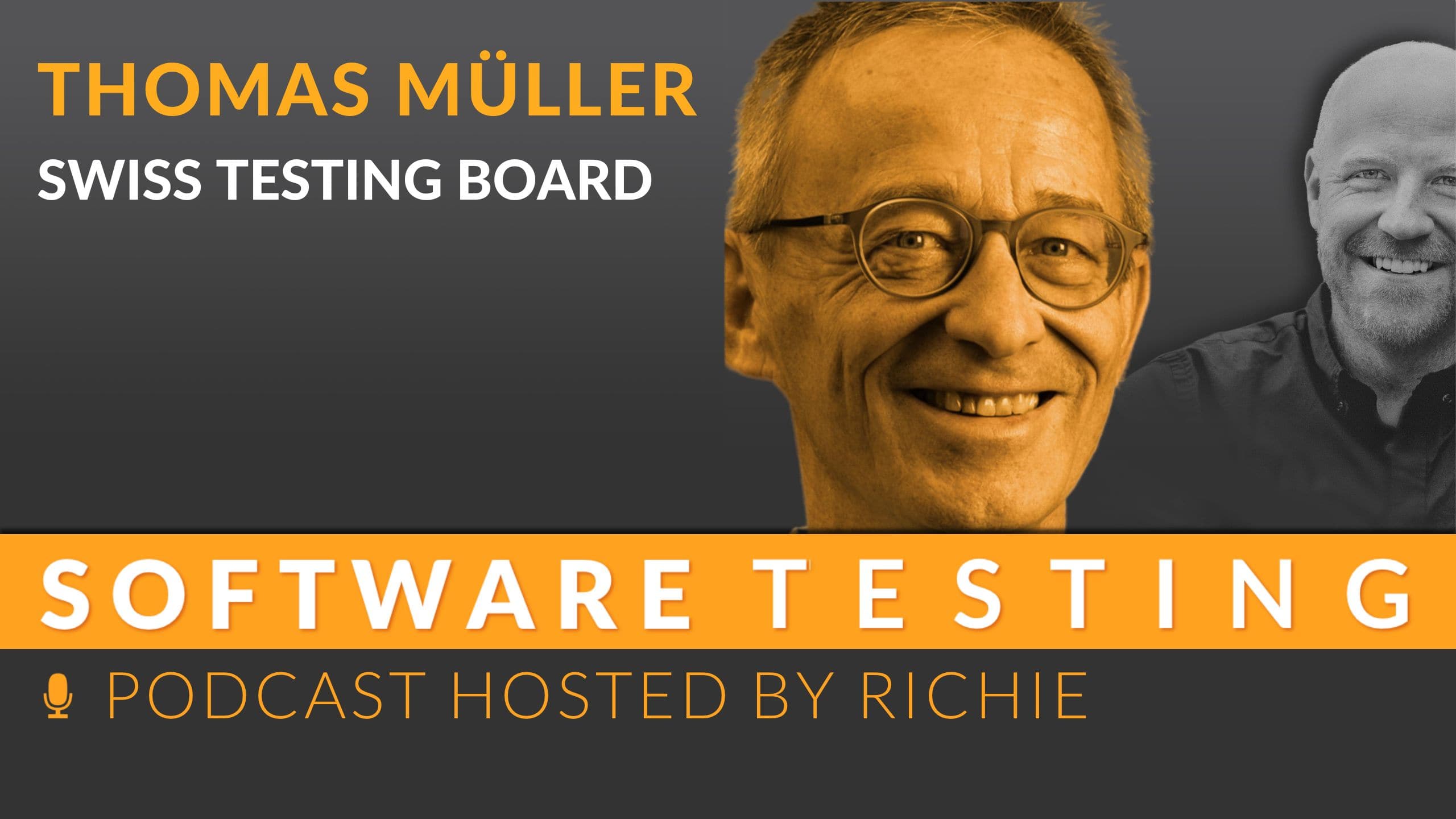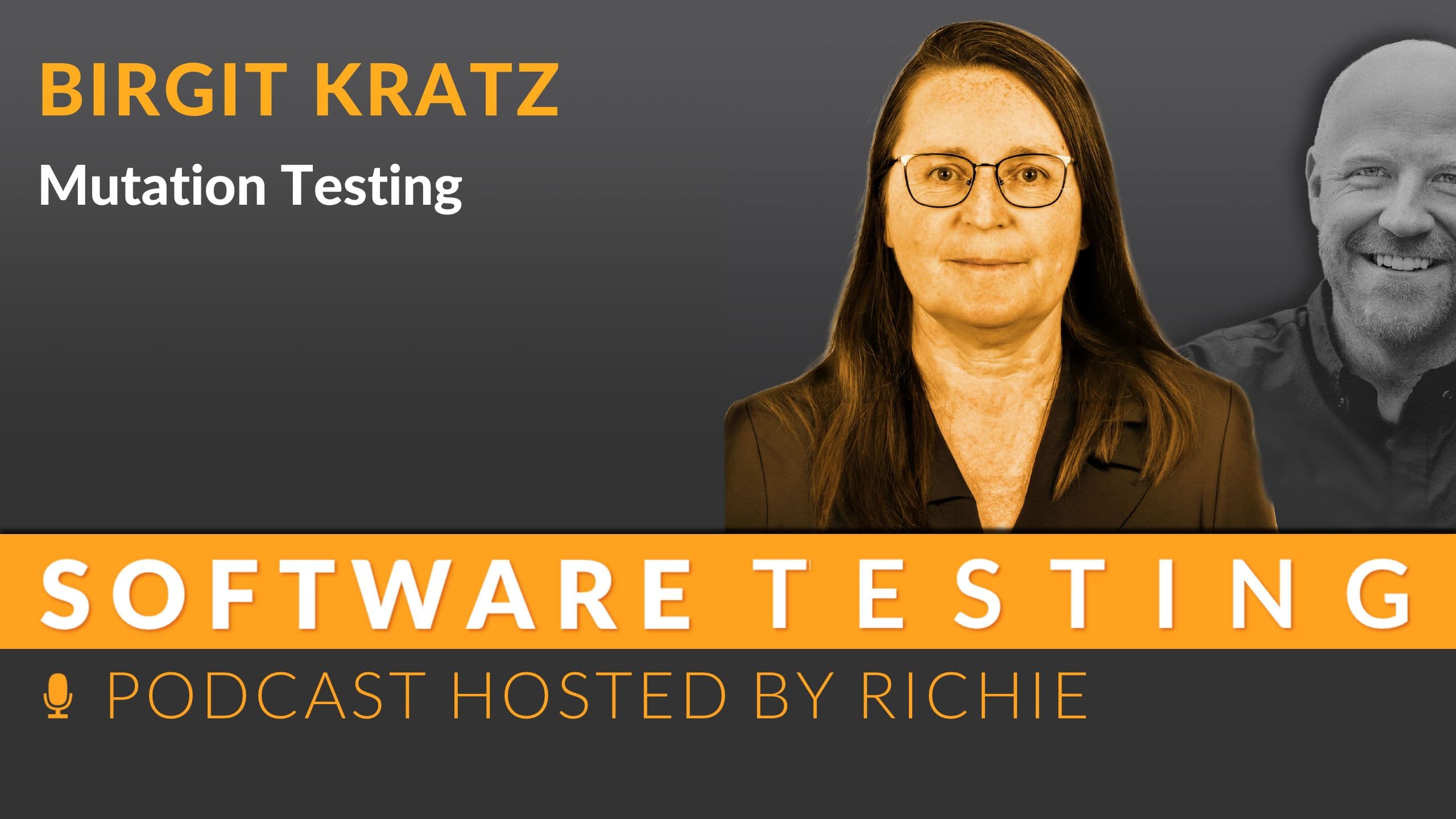Testing Enterprise Software
The challenges and methods of testing in large enterprise environments are of central importance, especially in the context of SAP and other...

Since its foundation in the early 2000s, the Swiss Testing Board has undergone significant development in the field of software testing. The initiative began with the aim of creating a training structure for testers that would be based on internationally recognized standards. In the early days, the focus was strongly on the requirements of the financial sector, while the pharmaceutical industry was difficult to reach. Today, testers are faced with the challenge of adapting to rapid technical developments, particularly in terms of automation and integration into agile development processes. An understanding of software architecture and the ability to systematically analyze it are becoming increasingly important in order to meet changing requirements.
In this episode, I talk to Thomas Müller about the development of the Swiss Testing Board and its role in the software testing community. We go back to the beginnings in the early 2000s, when Thomas, together with others, laid the foundations for the ISTQB certificates. He talks about the challenges and the pioneering work that shaped testing in Switzerland. We also discuss the importance of moving with the times while preserving the tried and tested principles of testing.
"Understanding what it's used for and how it's built is extremely important." - Thomas Müller
Thomas Müller studied chemistry, mathematics and geography in the 1980s and also focused on my passion for education and computer science. His professional career began in the pharmaceutical industry before he became project manager for "Computer Science at the Baselland Elementary School", where he developed curricula for pupils in a national and international network. After setting up software quality assurance at a major Swiss bank, he founded Software Validation GmbH in 1995 with a focus on meeting regulatory requirements for computer systems, particularly in the area of the US FDA.
At the same time, he co-founded the ISTQB and worked for 10 years as an author of the Foundation Level Syllabus.
Today I focus on critical projects for his clients, strategic consulting and the implementation of these strategies.
The Swiss Testing Board (STB) is a pioneering organization in Switzerland that specializes in the certification of software testers. Founded in the early 2000s, the STB has been instrumental in the development and establishment of uniform standards in the field of software testing. Through its work, the Swiss Testing Board helps to ensure and further develop quality and professionalism in software testing.
The importance of the STB lies above all in its role as a central authority for the recognition and examination of competencies in software testing. STB certifications are an important proof of the expertise and practical skills of testers in the Swiss IT industry. Companies benefit from qualified specialists who systematically and methodically apply sound test techniques.
Importantly, the Swiss Testing Board combines local expertise with international standards. This combination enables certified testers to assert themselves both on the domestic market and internationally.
Key points about the Swiss Testing Board:
If you want to develop professionally as a software tester in Switzerland, you can hardly avoid the Swiss Testing Board.
The founding of the Swiss Testing Board (STB) dates back to the early 2000s, around 2001/2002 to be precise. A decisive moment was a presentation by Thomas Müller at Credit Suisse, where the need for a certification option for software testers became clear. After the presentation, Silvio Moser approached Müller directly and brought up the idea of official tester certification.
A close collaboration then began with Carol Frühauf, who was already associated with the SAQ IT specialist group and had knowledge of existing curricula, particularly from the ASQ and the British organization ISEB (Information Systems Examination Board). The aim was to develop a uniform curriculum for software testers and establish international standards.
In the course of these efforts, cooperation was established with international organizations such as ISEB and later the ISTQB (International Software Testing Qualifications Board). This cooperation made it possible to jointly design the content for the Certified Tester Foundation and to define globally valid learning objectives and examination standards.
Although the founding meeting of the STB took place in Scotland, further work was mainly carried out in the Rhine region. There, a small group of experts met regularly to further develop the curriculum and create an organizational basis for the Swiss Testing Board. Thomas Müller took over the coordination of the curriculum work and placed great emphasis on measurable learning objectives as the basis for training testers.
The structure of the Swiss Testing Board (STB) began as an informal working group without official association status. Initially, it was a small group of six to seven people who met regularly in Zurich to drive the organization forward. The SAQ IT specialist group played a crucial role in the accreditation of course providers for the STB.
The informal nature of the STB enabled a flexible and collaborative environment for the design and development of the certification programs. By working closely with the SAQ IT Specialist Group, course providers could be accredited to deliver high quality training and promote standards in software testing.
The importance of measurable learning objectives for training testers is at the heart of the Swiss Testing Board's (STB) pedagogical principles. Clear and measurable objectives allow trainees to be specifically prepared for their exams and their progress to be monitored. This helps to ensure the quality of training and certification.
The Bloom taxonomy and Anderson's extensions are critical to curriculum design in software testing. These models provide a structured approach to organizing instructional content according to learning objectives and ensuring that various cognitive skills are developed in testers. Applying these pedagogical concepts enables STB to offer a comprehensive curriculum that meets the requirements of modern software testing.
By integrating these pedagogical principles into the Swiss Testing Board's curriculum, testers are prepared for complex challenges and are equipped with the knowledge and skills necessary to operate successfully in the software testing industry.
The Swiss Testing Board (STB) continues to play an important role in the Swiss market for software testing certifications, although Thomas Müller ceased to be actively involved a few years ago. There is still a demand for certificates, which shows that testers continue to need standardized qualifications and recognition.
Challenges for testers today are characterized by:
The classic test plans remain important, but the complexity of modern technologies requires additional skills from testers. Only those who are familiar with the technologies used and new working methods can meet the increased requirements. Certifications continue to be an important basis for systematically imparting this knowledge and ensuring the quality of testers.
In the ever-evolving world of software testing, it is critical that testers continue to develop their skills to meet the requirements of the industry. Here are some recommendations on how testers can improve their software testing skills:
Testers should not only understand the technology they are testing, but also the purpose behind the system. A deep understanding helps to develop more effective test scenarios and identify potential vulnerabilities.
With the increasing use of tools such as GitLab, it is crucial for testers to familiarize themselves with the latest deployment methods. Understanding these processes allows testers to perform tests more efficiently and identify potential problems early on.
The use of modeling techniques can increase the effectiveness and efficiency of testing. By modeling systems of systems, testers can anticipate potential risks and take preventive action.
By continuously developing their skills, testers can ensure that they keep up with the current challenges of software testing and deliver high quality results.
The Swiss Testing Board remains a key player for the future of software testing in Switzerland. Traditional test plans remain valid, even if modern technologies and methods such as DevOps, agile approaches and artificial intelligence pose new requirements.
"The principles of Myers and other testing pioneers are still fundamental."
Testers have a responsibility to continuously educate themselves and adapt their skills to technological progress. This is the only way to ensure sustainable quality and remain competitive in the dynamic software testing environment.

The challenges and methods of testing in large enterprise environments are of central importance, especially in the context of SAP and other...

Podcast Episode: Contract-Based Testing Mariusz is an expert in contract-based testing. In this interview, we talk about what CBT is all about, how...

Podcast Episode: Mutation Testing In this episode I talk to Birgit Kratz about mutation testing in the Java environment. Birgit gives us insights...